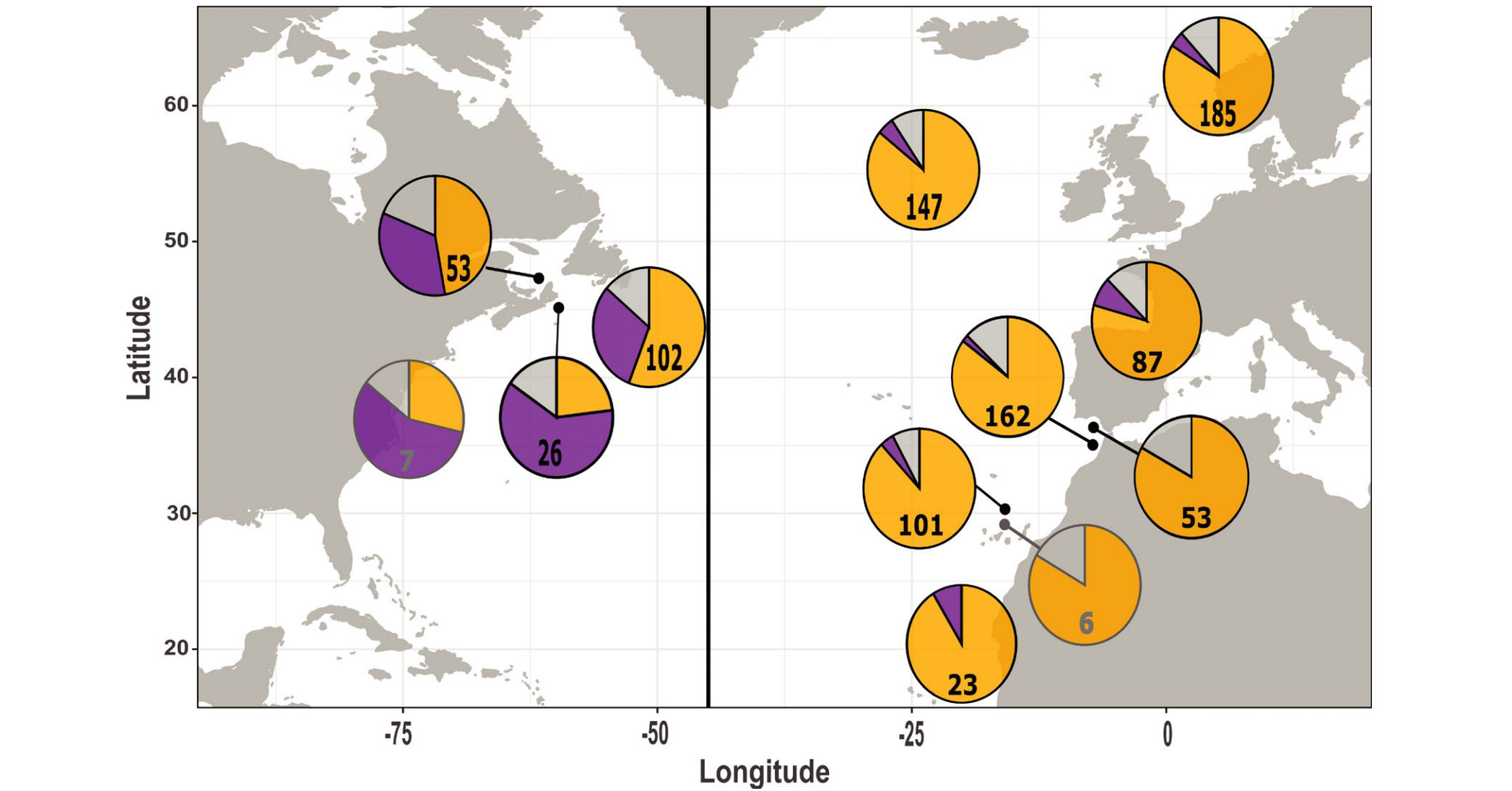Scientists uncover the ''home'' of bluefin tuna in the North Atlantic

An Atlantic bluefin tuna feeds in the waters of Canada's Gulf of Saint Lawrence.
Photo: National Geographic Image Collection / Alamy Stock Photo
“Orfjord” took the first tuna catch of the year off Frøya in August.
Photo: Lars Kåre Kvila / “Orfjord”
Forskarane tar prøver frå fisken på fiskemottak. Dei hentar DNA-prøver frå muskelvev i halerota til fisken.
Photo: Ørjan B. Sørensen / Institute of Marine ResearchPublished: 12.09.2019 Updated: 18.09.2019
These results have been published in a new article that attempts to divide the Atlantic bluefin tuna in genetic stocks.
Where do bluefin tuna come from?
“In the summer, this ‘Formula 1’ of fish feed all over the North Atlantic, travelling at speeds of up to 70 kilometres per hour. That makes it hard to keep track of, to say the least”, says marine scientist Leif Nøttestad.
The researchers already knew that the world’s biggest tuna has spawning grounds in both the Gulf of Mexico and the Mediterranean. But since the bluefin tuna is a bit of a globetrotter, that begs the question of where the fish caught in other parts of the Atlantic Ocean come from. For example those caught in Norway.
“Norwegian” fish are mainly from the Mediterranean
“Fresh DNA testing shows that 83 percent of the tuna caught in Norway come from the Mediterranean, while just a few come from the Gulf of Mexico. Around 13 percent come from unknown spawning grounds”, says Nøttestad.
“We know this because we have taken muscle samples from virtually all of the bluefin tuna landed here in recent years. 185 bluefin tuna caught between 2013 and 2017 were analysed.
Their DNA was then compared with that of fish that definitely spawn in the known spawning grounds. It has taken several years to assemble this DNA reference.
“Bluefin tuna don’t respect borders”
Knowing where the fish that we are catching actually come from, can help to inform fisheries advice and management for the bluefin tuna. It may also help politicians to agree on who “owns” the fish.
Currently a dividing line is drawn in the middle of the Atlantic at 45 degrees west. For the sake of simplicity, it is assumed that bluefin tuna caught west of this line come from a western population, and that those caught east of it come from the east.
“Our DNA testing shows that bluefin tuna don’t respect borders. They frequently cross the Atlantic. Notably, a significant proportion of the fish caught in the Gulf of Mexico come from the Mediterranean”, says Leif Nøttestad.

Some of the tuna caught come from areas that the scientists don’t yet know where are. They are the grey slices in the pie charts.
“Data from satellite tags indicate a possible spawning ground off Madeira. Some bluefin tuna stop there for a suspiciously long time during the spawning season.
We are learning more the whole time, but the world’s biggest tuna still has many secrets that we want to uncover” he concludes.
Reference
Rodríguez‐Ezpeleta, Naiara, et al. “Determining natal origin for improved management of Atlantic bluefin tuna.” Frontiers in Ecology and the Environment (2019). URL: https://doi.org/10.1002/fee.2090
